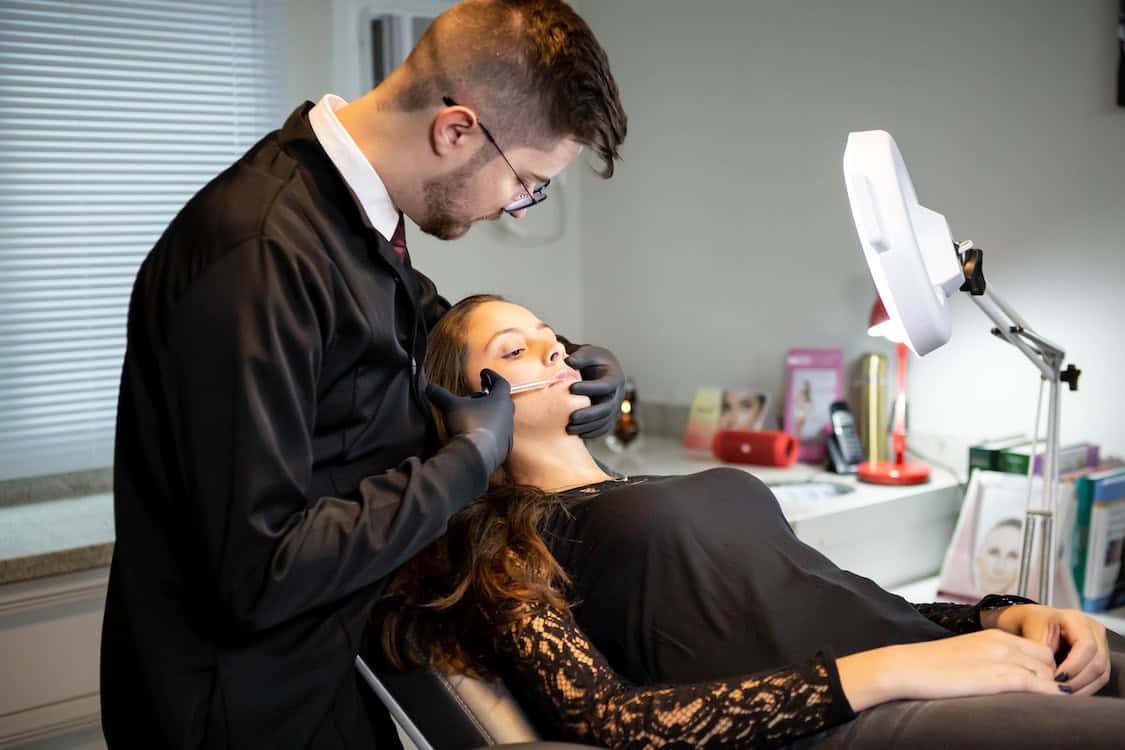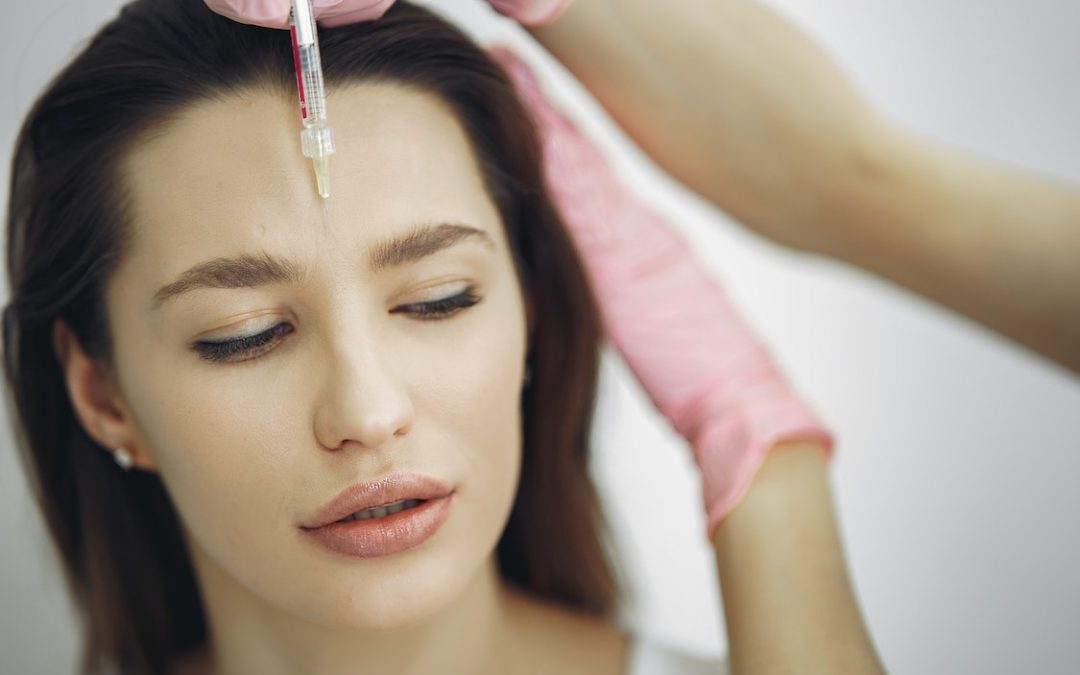If you are considering cosmetic botox, you need to know a few things about the procedure before you start. The treatment process, common side effects, dosage and recovery time are discussed in this article. You will also learn about the procedure’s cost. Getting your first treatment can be a fun experience, but make sure to follow the directions carefully.
Treatment process

Botox treatment is a popular procedure that can reduce wrinkles and improve your appearance. It is a safe and convenient procedure that requires very little aftercare and recovery time. The treatment is administered by injecting a small amount of botulinum toxin into your face. This toxin is a type of nerve poison produced by the bacterium Clostridium botulinum. It works by blocking the release of acetylcholine, a chemical messenger in the body that controls voluntary muscles.
Most patients can return to work right away, though vigorous exercise should be avoided for at least 24 hours. You should also avoid bending over for at least four hours following treatment. You can also apply a cold compress to the treated area. This will help reduce the swelling and bruising that may result from the treatment.
After a Botox treatment, the effects are usually visible in just three to seven days. During this time, you may experience some temporary bruising or numbness. In addition, you may feel angry or irritated at first, but it will go away over time. If you want to maintain your new-found appearance for longer, you can have a follow-up treatment every three months.
After the procedure, you can resume normal activities. However, it is important to wait at least a day after your Botox treatment to avoid any complications. The most common side effects are mild redness and swelling and bruising.
Common side effects
Although the most common Botox side effects are mild, some people may experience more serious ones. Serious muscle reactions, which can require immediate medical attention, can happen hours to weeks after a Botox treatment. For this reason, it’s important to talk with your doctor about your medical history before receiving Botox.
Botox is a nonsurgical treatment that helps reduce spasticity and other disorders in the muscles. It is injected under the skin and into muscles. It can also be injected into the eye, which is why some patients are required to wear protective contact lenses or an eye patch. Other side effects of Botox include urinary retention and urinary tract infection.
People with neuromuscular disorders are at risk for experiencing serious side effects after Botox. These symptoms can include muscle weakness, double vision, difficulty swallowing, and trouble breathing. However, most patients find the benefits of Botox treatments worth the potential side effects. While these side effects are rare, they can affect your ability to speak or swallow, so it is vital to speak with your doctor about the risks and benefits of Botox before scheduling an appointment.
Another common side effect of Botox treatment is slight bruising. This may occur within a few hours following the injection. However, deep bruising is rare and will go away after a couple of days. Botox should also help you prevent bruising after a few days. There is also a possibility that you may experience a headache, though this is rare.
Dosage
The Dosage of Botox is highly dependent on the condition being treated and the time frame. For example, a patient suffering from blepharospasm may receive as few as three units of the drug in the eyelids, while a patient suffering from strabismus may receive as much as six units of the chemical in the affected area. In addition, the number of injection sites should be based on the individual’s needs and health. The recommended time between sessions is 12 weeks.
Botox is given as injections and begins to work on nerve endings within 24 to 72 hours. However, the treatment may take longer in some people. Therefore, it is important to discuss the Dosage of Botox with your healthcare provider prior to getting this treatment. In addition, Botox should not be given to pregnant women or breastfeeding women, as there is a chance that it will cause complications.
Botox can interact with other medications and foods. If you take other medications, your doctor may be able to recommend alternatives to Botox. It is also important to inform your doctor of any herbs, vitamins, and supplements you are taking. Your pharmacist can also inform you of any potential interactions.
Botox injections can cause life-threatening side effects, especially in children. Symptoms can include double vision, drooping eyelids, and breathing or swallowing problems. In these instances, you should contact your doctor immediately.
Recovery time
The recovery time of Botox injections is usually from seven to 14 days. However, touch-up treatments are required one to two weeks after the initial treatment. In addition, you may experience bruising. It is also possible to experience slight drooping of the eyebrows. This is temporary, and can be corrected.
For the first 24 hours following your procedure, you should avoid lying down or bending. This can cause the Botox to migrate to other areas. You should also avoid drinking alcohol and aspirin for at least 24 hours after your Botox treatment. Alcohol may thin the blood, which can lead to bruising.
After Botox, you should not drink alcohol and should not touch your face. For the first 24 hours, you should also avoid strenuous activities. Your doctor may also recommend avoiding certain supplements and blood-thinning medications. These could have unpredictable effects on bruising and bleeding. If you’re worried about Botox recovery, it’s advisable to seek the advice of a reputable provider such as Visage Clinic. This clinic has earned a good reputation among its patients and is known for their professionalism.
Botox treatments take between three and seven days to take effect. Once the effects have worn off, you should be able to return to work. In most cases, you should also be able to return to your normal activities within a week of your Botox procedure.
Precautions
Botox is a popular treatment for wrinkles, but it has side effects that you should be aware of. After the procedure, you should avoid doing heavy lifting, rubbing, and facial expressions for several days. You should also avoid excessive sun exposure for 72 hours. Massage is also not advised for a few days after the treatment. Massage can spread the product, causing more swelling and bruising.
You should also consult a certified medical professional before getting Botox. This way, your doctor can make sure that the procedure is safe for your skin and lifestyle. Before your appointment, be sure to disclose any allergies you have, any medical conditions you’re currently taking, and any other medication that might affect the injection. Also, if you take blood thinners, your practitioner may advise you to stop using them a few days before your appointment. This way, you will reduce the risk of bleeding.
In addition to these precautions, it is important to be as open as possible with your cosmetic doctor about your medical history. Tell them about any medications you’re taking, any allergies you have, and any skin treatments you’ve had in the past. You should also let your doctor know if you’re breastfeeding or pregnant or have any respiratory issues. Also, don’t hesitate to ask questions about Botox treatments.
After your Botox treatment, you should avoid touching your face, lying down, or exercising for a few days. It’s also important to avoid flying and other activities that may negatively affect the neurotoxin’s movement. Additionally, it can take up to two weeks for the results of your Botox treatment to take full effect.
Cost
While the average price of Botox is between $10 and $15 per unit, it can vary widely depending on the area that’s treated. In some larger cities, it may cost up to $25 per area. In smaller towns, however, it can be as little as $10. The cost of roseville botox services actually hover between this range. Most doctors charge per unit, and you may be able to find a cheaper option if you purchase a bundle of treatments.
The cost of Botox depends on a number of factors, including your skin condition. Severe wrinkles will require more Botox, resulting in a higher cost. The ideal treatment will soften wrinkles without making them look frozen. In addition, men’s muscles are bigger, so they will need more Botox than women’s.
Most offices charge anywhere from $350 to $500 per unit, but some practices charge as little as $10 or $15 per unit. Regardless of where you receive your Botox, it’s always best to get price quotes per unit. You can save money by finding a plastic surgeon who offers a package deal based on the area to be treated.
If you’re looking for a cheaper Botox treatment, look for a clinic that accepts various payment methods. Many clinics accept cash, personal checks, and major credit cards. In addition, ask about their unit limit. Unless you have incredibly strong frown muscles, 20 units of Botox may not be enough. Ask about touch-up policies as well.

